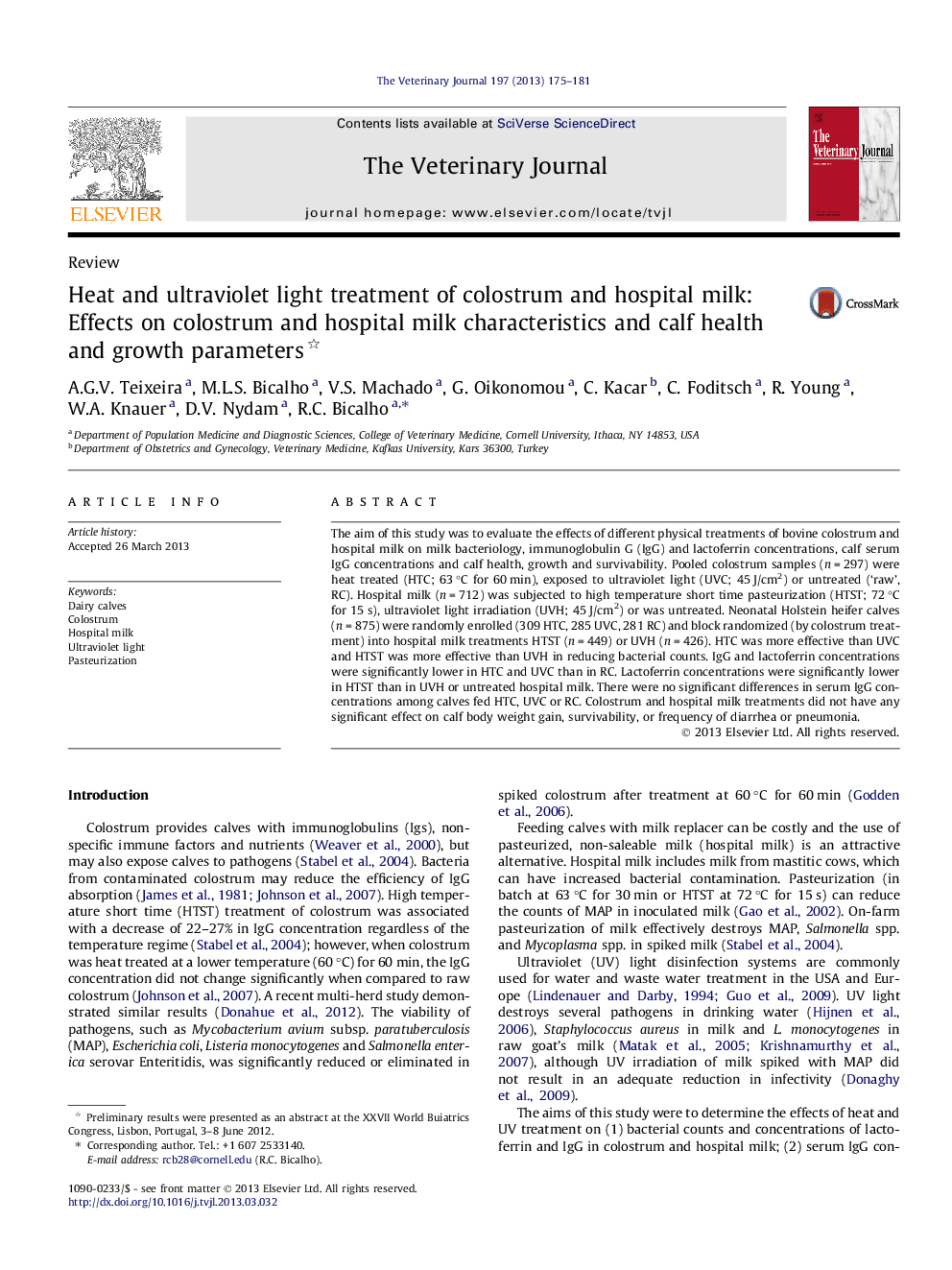| Article ID | Journal | Published Year | Pages | File Type |
|---|---|---|---|---|
| 5798194 | The Veterinary Journal | 2013 | 7 Pages |
The aim of this study was to evaluate the effects of different physical treatments of bovine colostrum and hospital milk on milk bacteriology, immunoglobulin G (IgG) and lactoferrin concentrations, calf serum IgG concentrations and calf health, growth and survivability. Pooled colostrum samples (n = 297) were heat treated (HTC; 63 °C for 60 min), exposed to ultraviolet light (UVC; 45 J/cm2) or untreated ('raw', RC). Hospital milk (n = 712) was subjected to high temperature short time pasteurization (HTST; 72 °C for 15 s), ultraviolet light irradiation (UVH; 45 J/cm2) or was untreated. Neonatal Holstein heifer calves (n = 875) were randomly enrolled (309 HTC, 285 UVC, 281 RC) and block randomized (by colostrum treatment) into hospital milk treatments HTST (n = 449) or UVH (n = 426). HTC was more effective than UVC and HTST was more effective than UVH in reducing bacterial counts. IgG and lactoferrin concentrations were significantly lower in HTC and UVC than in RC. Lactoferrin concentrations were significantly lower in HTST than in UVH or untreated hospital milk. There were no significant differences in serum IgG concentrations among calves fed HTC, UVC or RC. Colostrum and hospital milk treatments did not have any significant effect on calf body weight gain, survivability, or frequency of diarrhea or pneumonia.
